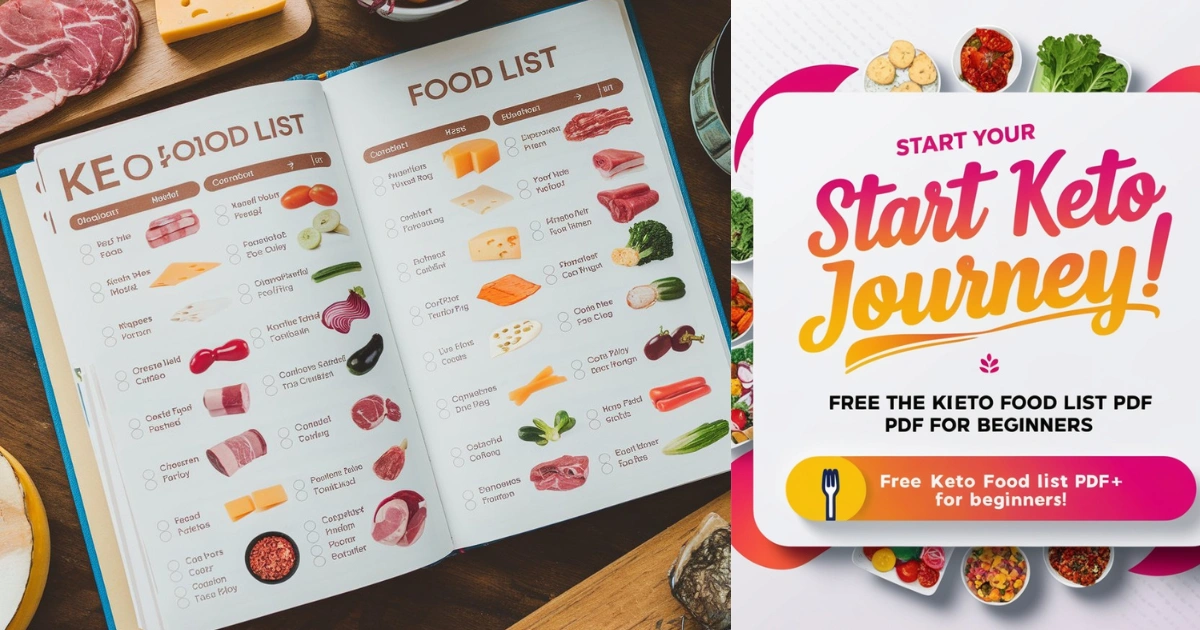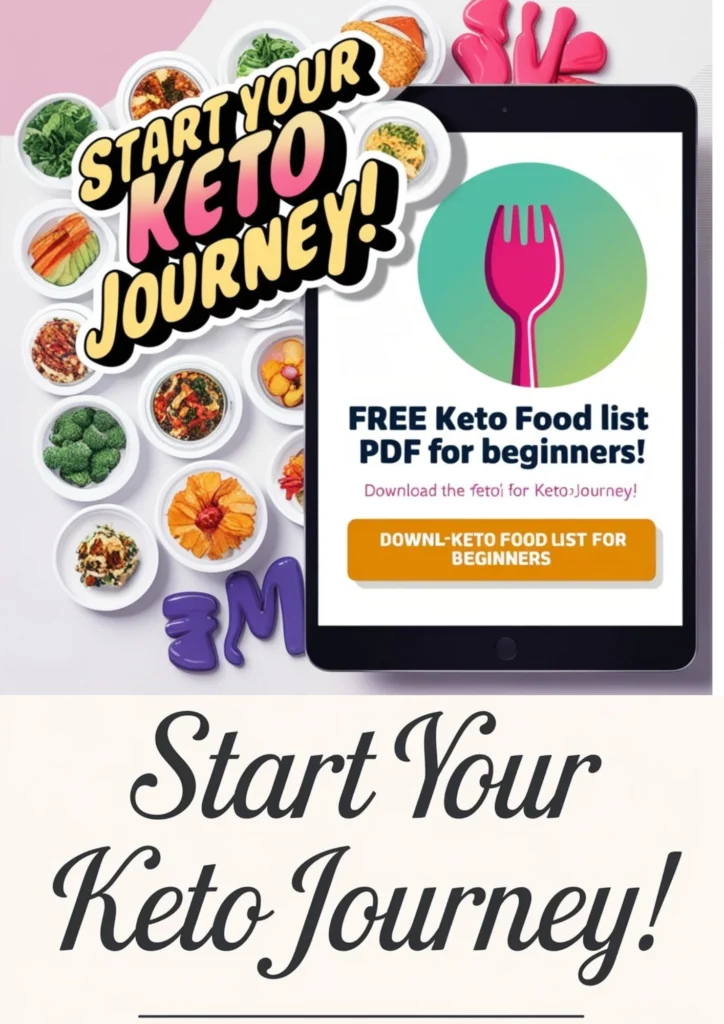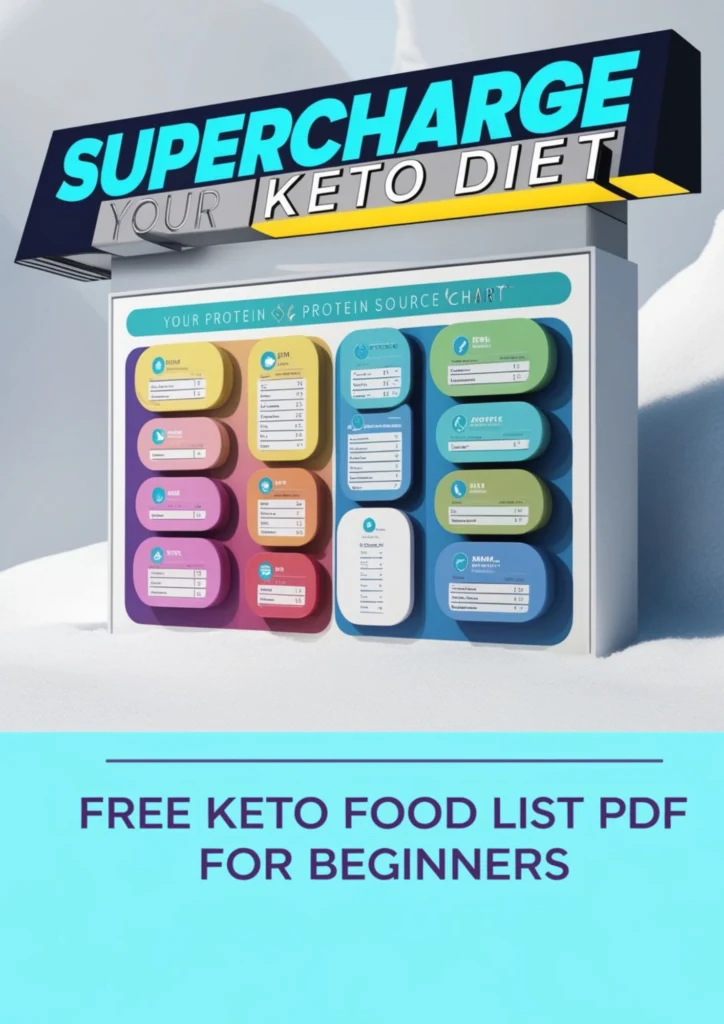Protein Sources Chart: Best Foods to Supercharge Your Keto Diet

Table of Contents
Protein Sources The keto diet has become one of the most popular dietary approaches in recent years, and for good reason. It promotes fat-burning, supports weight loss, and even improves cognitive performance for some people. Central to a successful keto diet is the intake of quality proteins alongside fats, while keeping carbohydrate intake extremely low. However, when following the keto diet, it’s essential to focus on high-protein foods that align with the macronutrient goals of this eating plan. Protein Sources Chart
This article will serve as a comprehensive guide, covering the best protein sources for those on the keto diet. You’ll find a detailed protein sources chart, expert tips on how to incorporate these foods into your meals, and a breakdown of why each source is excellent for keto. Whether you’re a seasoned keto veteran or just starting out, this guide will help you supercharge your keto diet by choosing the right protein-packed foods.
1. Why Protein is Vital for a Keto Diet
The keto diet is primarily a high-fat, low-carb, and moderate-protein diet. But don’t let the emphasis on fats fool you—protein plays a critical role. Here’s why:
- Muscle Maintenance: When you cut carbs, your body may use up muscle mass as energy if you’re not consuming enough protein. Ensuring adequate protein intake helps preserve muscle mass, especially when you’re in a calorie deficit for weight loss.
- Satiety: Protein helps you feel full for longer periods. When you’re eating fewer carbs, it’s important to stay satisfied with meals, and protein contributes greatly to this feeling of fullness.
- Metabolism Boost: Protein increases the thermic effect of food, meaning it takes more energy for your body to digest it compared to fats or carbs, boosting your metabolism.
- Tissue Repair and Hormone Production: Protein supports tissue repair, immune health, and the production of important hormones and enzymes.
However, unlike standard high-protein diets, the keto diet requires you to consume protein in moderation. Too much protein can convert into glucose, which might kick you out of ketosis. That’s why balance your protein sources is crucial.
2. Protein Requirements on Keto: How Much is Enough?
When on a keto diet, it’s important to know how much protein you actually need. Too little, and you risk muscle loss and nutrient deficiencies; too much, and you may stop burning fat as efficiently because of gluconeogenesis (the process where excess protein is converted into glucose).
For most people following a keto lifestyle, the general recommendation is to consume:
- 0.6 to 1.0 grams of protein per pound of lean body mass (not total body weight). For example, if you weigh 150 pounds but have 120 pounds of lean body mass, you should aim for around 72-120 grams of protein per day.
The exact amount will vary depending on factors such as activity level, age, gender, and overall health. If you are more active, especially if you engage in weightlifting or other forms of resistance training, your protein needs may be higher.
Now that you understand the role of protein and how much you need, let’s dive into the best protein sources that will help you stick to your keto goals.
3. Animal-Based Protein Sources for Keto
Animal proteins are among the most complete protein sources, meaning they provide all the essential amino acids your body needs. These options are not only high in protein but also rich in fats, making them perfect for keto.
a) Eggs
Eggs are one of the most versatile and nutrient-dense protein sources on the keto diet. A single large egg contains around 6 grams of protein and 5 grams of healthy fats, making them an ideal keto food. Plus, eggs are packed with essential vitamins like B12, choline, and vitamin D.

- How to Use: Enjoy eggs scrambled, boiled, or poached for breakfast, or even whip them into baked goods for a keto-friendly meal.
b) Fatty Fish (Salmon, Mackerel, Sardines)
Fish like salmon, mackerel, and sardines are incredibly rich in both protein and healthy omega-3 fats, which support heart and brain health. A 3-ounce serving of salmon, for example, provides around 22 grams of protein and a high dose of beneficial fats.
- How to Use: Grill salmon with butter, or use canned sardines as a topping for salads or keto crackers.
c) Beef
Beef is an excellent protein source that also provides a significant amount of saturated fats and iron. For the keto diet, grass-fed beef is preferred due to its higher content of omega-3 fatty acids and conjugated linoleic acid (CLA), which supports fat loss and muscle retention.
- How to Use: Incorporate ground beef in keto-friendly casseroles or burgers, or enjoy a steak cooked in butter for a nutrient-dense meal.
d) Chicken Thighs and Skin-On Poultry
While lean chicken breast is high in protein, it lacks the fats needed for keto. Instead, chicken thighs, especially with the skin on, are a much better option, providing both protein and fat. A 3-ounce portion of chicken thighs delivers about 19 grams of protein and 12 grams of fat.
- How to Use: Bake or grill chicken thighs, or shred them and add them to keto-friendly soups or salads.
e) Pork (Bacon, Sausages, and Pork Loin)
Pork, particularly bacon and sausages, is a popular option on the keto diet. These foods are high in protein and fat, making them ideal for a keto-friendly breakfast or snack. However, be mindful of any added sugars or fillers in processed meats like sausages.
- How to Use: Fry bacon in the morning or pair pork sausages with scrambled eggs for a satisfying meal.
4. Dairy-Based Protein Sources for Keto
Dairy products are another fantastic source of protein on the keto diet, especially those that are high in fat and low in carbs. Always opt for full-fat versions to stay in line with keto’s macronutrient requirements.
a) Cheese
Cheese is a staple in keto diets, offering a rich source of both protein and fat. For example, cheddar cheese contains around 7 grams of protein and 9 grams of fat per ounce. Varieties like mozzarella, blue cheese, and parmesan are also keto-friendly.
- How to Use: Add cheese to salads, melt it over meat dishes, or use it as a snack with keto crackers.
b) Greek Yogurt (Full-Fat)
Although yogurt can be higher in carbs, full-fat Greek yogurt is a protein-rich dairy product that can fit into a keto diet when consumed in moderation. A serving of Greek yogurt typically contains 10 grams of protein.
- How to Use: Mix Greek yogurt with a handful of nuts and seeds for a filling breakfast or snack.
c) Heavy Cream
Heavy cream is another high-fat dairy product that provides protein as well. While it’s more often used for its fat content, it can still contribute to your daily protein intake.
- How to Use: Use heavy cream in keto coffee, soups, or as a base for creamy keto sauces.
5. Plant-Based Protein Sources for Keto
For those who prefer plant-based options, there are keto-friendly proteins available, but they should be chosen carefully due to their carbohydrate content. Here are a few plant-based options that are suitable for keto.
a) Tofu and Tempeh
Tofu and tempeh are two of the most common plant-based proteins that can be used in a keto diet. Both are made from soybeans and provide a good amount of protein, with tofu offering around 10 grams of protein per 4-ounce serving.
- How to Use: Stir-fry tofu with low-carb vegetables or add tempeh to salads for a filling meal.
b) Nuts and Seeds
Nuts and seeds, particularly almonds, chia seeds, and flaxseeds, offer a modest amount of protein while also providing healthy fats. However, be cautious of the carbohydrate content, as some nuts are higher in carbs than others.
- How to Use: Sprinkle chia seeds or flaxseeds on yogurt, or eat a handful of almonds as a snack.
c) Protein Powders
There are many keto-friendly protein powders made from whey or plant-based proteins like pea or hemp. Be sure to select a powder that is low in carbs and free of added sugars.
- How to Use: Blend protein powder into keto smoothies or mix it with water for a post-workout shake.
6. Comprehensive Protein Sources Chart for Keto
Below is a protein sources chart outlining the best keto-friendly foods and their protein content per serving.
| Food | Protein (g per serving) | Fat (g per serving) |
|---|---|---|
| Eggs (1 large) | 6 | 5 |
| Salmon (3 oz) | 22 | 12 |
| Chicken Thighs (3 oz) | 19 | 12 |
| Cheddar Cheese (1 oz) | 7 | 9 |
| Pork Bacon ( |
7. Plant-Based Protein Sources for Keto
While animal products are typically the go-to protein sources for keto, there are also plant-based options that work well for those who follow a vegetarian or plant-heavy keto diet.

a) Tofu and Tempeh
Tofu and tempeh are two of the best plant-based protein options for keto. Made from soybeans, tofu is lower in carbs than many plant proteins, and a 4-ounce serving provides about 10 grams of protein. Tempeh, which is fermented, offers around 21 grams of protein per 4-ounce serving.
- How to Use: Grill or stir-fry tofu and tempeh with low-carb vegetables for a filling and nutritious meal.
b) Nuts and Seeds
Nuts and seeds provide moderate protein and are also packed with healthy fats, making them ideal for keto. Almonds, walnuts, chia seeds, and flaxseeds are some of the top choices. For example, 1 ounce of almonds provides 6 grams of protein.
- How to Use: Sprinkle seeds on salads, mix them into keto-friendly smoothies, or enjoy a handful of nuts as a snack.
c) Seitan
Seitan is a high-protein, low-carb meat substitute made from wheat gluten. A 3-ounce serving contains around 21 grams of protein, making it a solid plant-based option for keto.
- How to Use: Use seitan in stir-fries or grill it with keto-friendly marinades for a meat-like texture and taste.
8. Protein Powders for Keto
If you’re looking for a convenient way to get more protein, keto-friendly protein powders can be a great solution. Many protein powders are formulated specifically for low-carb diets and come in whey, collagen, or plant-based varieties.
a) Whey Protein
Whey protein isolate is a popular choice for those on keto, as it is low in carbs and high in protein. One scoop typically contains 20-25 grams of protein.
- How to Use: Blend whey protein powder with unsweetened almond milk and ice for a post-workout shake.
b) Collagen Protein
Collagen protein is not only great for boosting protein intake, but it also supports joint health, skin elasticity, and gut health. One serving contains about 10–15 grams of protein and zero carbs.
- How to Use: Add collagen protein to your coffee, tea, or smoothies for an easy protein boost.
9. Comprehensive Protein Sources Chart
Here’s a protein sources chart
The keto diet is one of the most effective and popular ways to lose weight, improve energy levels, and enhance overall health. It’s a high-fat, low-carb diet that encourages your body to enter a metabolic state called ketosis, where fat becomes the primary fuel source. While fats take center stage in the keto diet, protein plays a critical role as well. Without sufficient protein, you risk losing muscle mass, feeling sluggish, and derailing your long-term keto success. The key to thriving on a keto diet is finding the right balance of high-quality protein sources that support muscle growth and metabolism without disrupting ketosis.
In this guide, we’ll explore the best protein sources for the keto diet and provide a detailed protein sources chart to help you optimize your meals. You’ll also discover how to incorporate these foods into your daily routine to stay on track with your keto goals.






